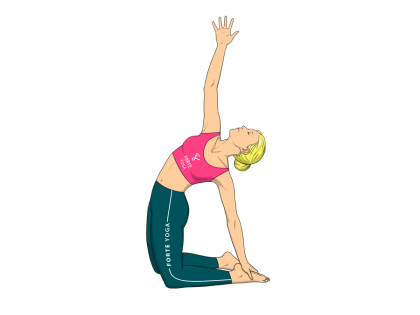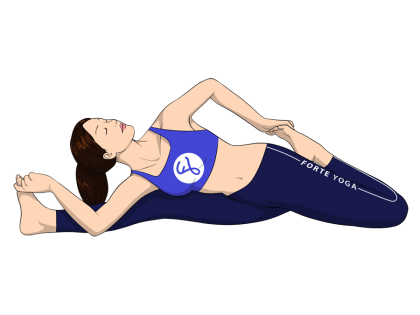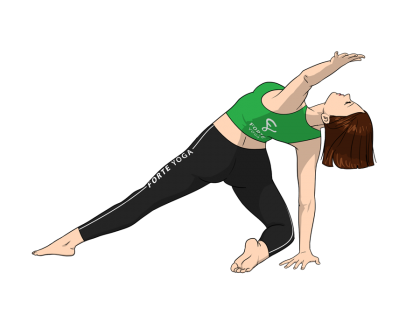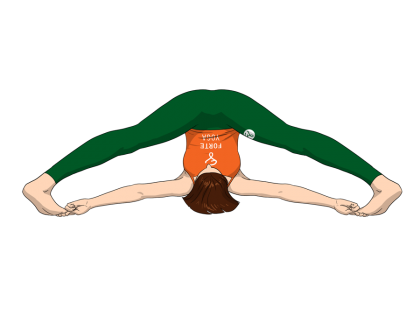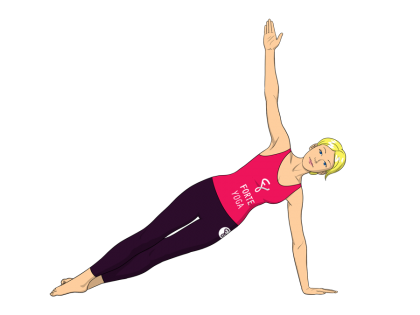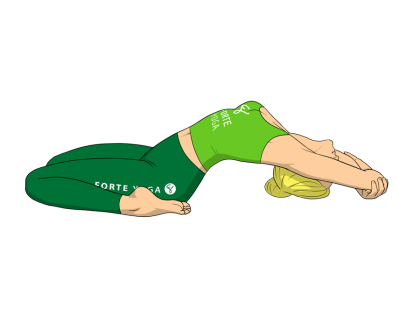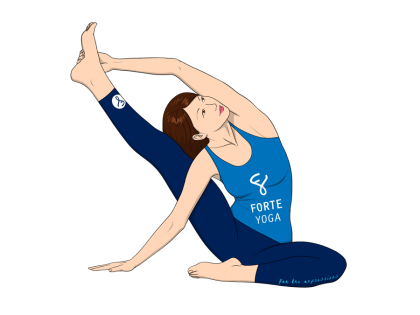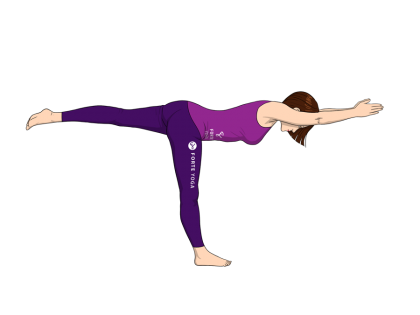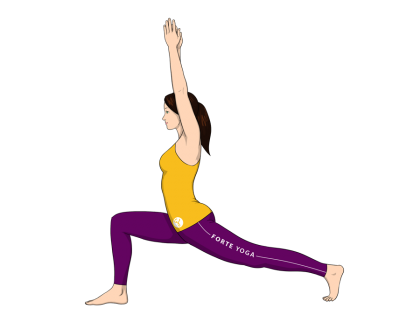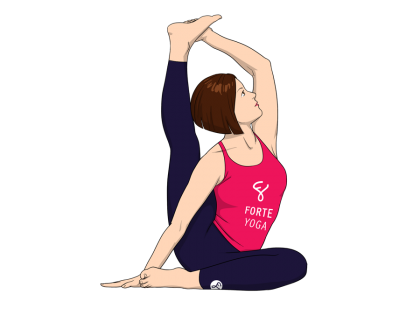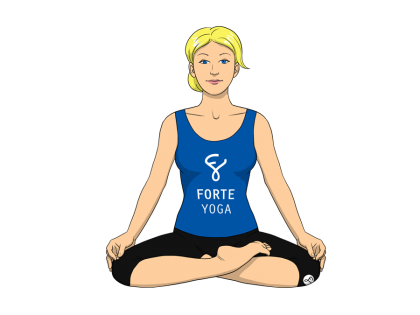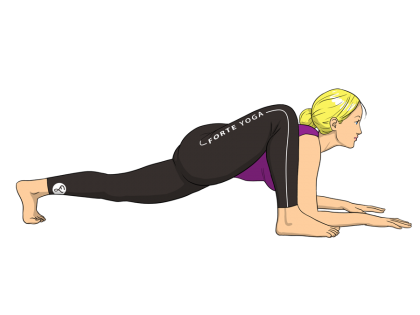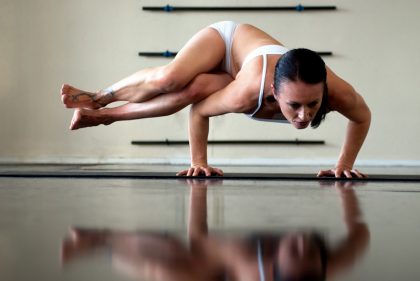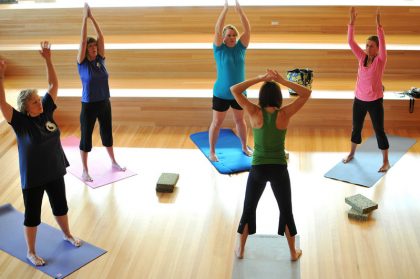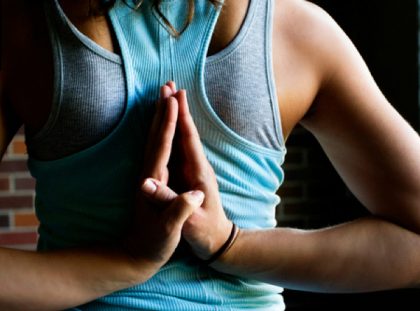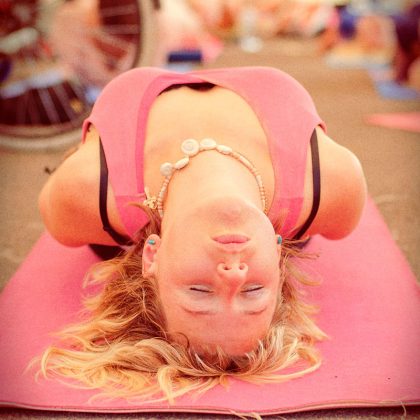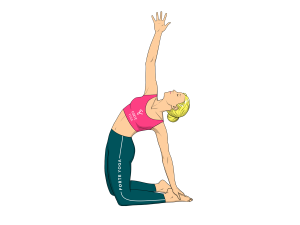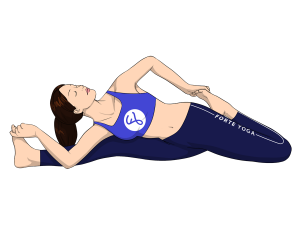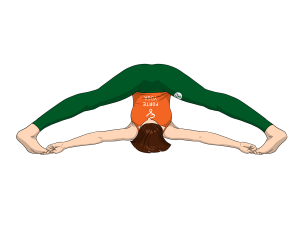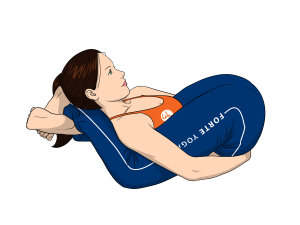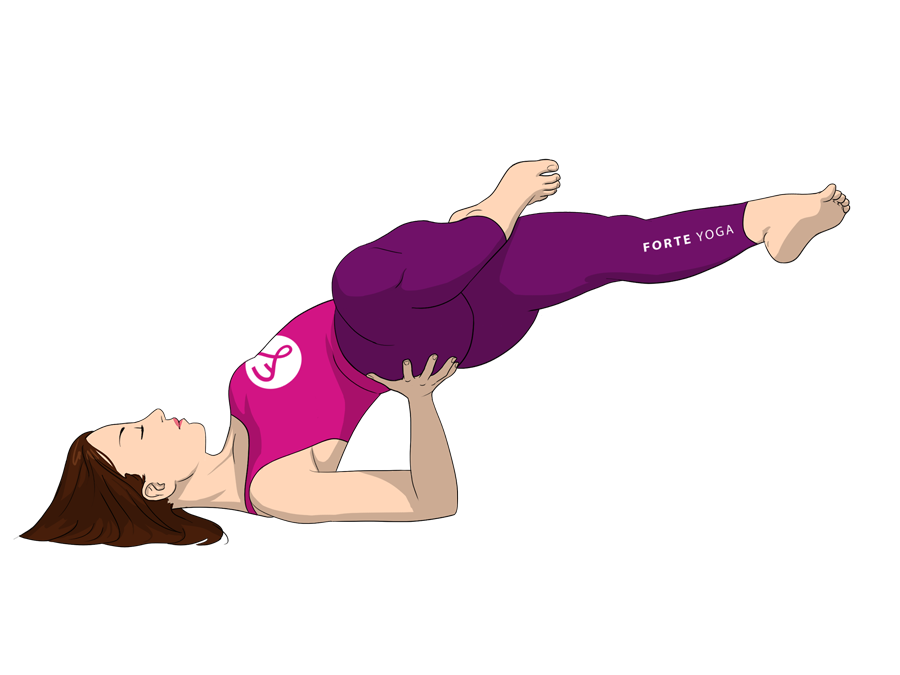
overview
Half Lotus Side Shoulderstand Yoga Pose is an inversion pose that targets the quads and shoulders and is ideal for yogis and yoginis at an advanced level.
 visuddha – the throat chakra
visuddha – the throat chakrarelated poses
[yoga-sharrre]
How To Do Half Lotus Side Shoulderstand Yoga Pose
- Begin by entering the Supported Shoulderstand (Salamba Sarvangasana). When you feel stable in this position, exhale and bend your left knee, placing your left foot on your right thigh near the crease of your hip joint. You left leg should resemble a Half Lotus, right leg reaching up toward the ceiling and out through the toes.
- Raise the position of your left hand on the back, placing it firmly on the left hip. When you feel that you can safely support your back with this hand alone, remove your right hand from your back and lay your arm on the floor perpendicular to your torso, palm pressed into the floor. Be sure to keep your weight evenly distributed across your shoulders and forearms.
- Hold this position if you’re new to the pose; otherwise, continue on to deepen the asana further. Exhale, leaning your torso and legs to the left. Extend your right leg, pushing out of the toes to the left. Your body will lower slightly, dividing the weight between your shoulders, forearms and the hand supporting your hip. Be sure to keep your shoulders grounded and active, preventing weight from falling on the neck. If you feel that you are balanced but cannot hold your weight in this pose, use your other hand as support on the back as well instead of laying it on the floor.
- Hold this pose for a few breaths, increasing to 30 seconds or more if possible. This position is difficult to hold so do not push the limit, which can lead to collapsing on the neck and shoulders. To come out of the position, bring your legs upright as you place both hands on your back for support. Lift your left foot off of the right hip, returning to the Supported Shoulderstand. Repeat steps with the right leg.
Notes
- Breathe deeply through each step.
- This pose requires balance and can be very difficult to hold. It should not be attempted if the Supported Shoulderstand is new or difficult for you.
- Both arms will be supporting weight in the elbows and wrists. Come out of the pose if you feel these areas becoming strained.
- Avoid this pose if you have back, shoulder, elbow, wrist, hip or knee injury.
- Avoid this pose if you have high blood pressure (hypertension), low blood pressure or are pregnant.
Tips
Be sure to read the Tips and extra information for the Supported Shoulderstand before attempting this pose. Reviewing the basics and re-familiarizing yourself with the cautions of the pose will help prepare you physically and mentally.
You can lean either toward or away from your Half Lotus; leaning the way instructed above gives a deeper stretch along the sides, but leaning toward your extended leg can give variation in the stretch of the side muscles.
Stretches & Strengthens
All Muscles: Quads, buttocks, abs, shoulders, neck, lats
Target Muscles: Quads, shoulders
Health Benefits of Half Lotus Side Shoulderstand Yoga Pose
- Can help treat insomnia and fatigue.
- Can relieve stress, anxiety and mild depression.
- Can improve digestion.
- Stimulates thyroid and prostate glands.
- Improves focus and balance.
- Improves blood circulation and increases lung capacity.

